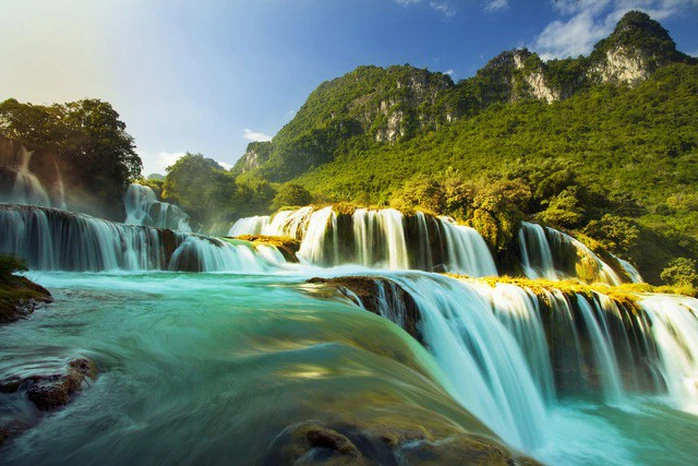The Non Nuoc Cao Bang Global Geopark is one of the most significant geographical areas in Vietnam, recognized by UNESCO as a Global Geopark in 2018. Located in Cao Bang Province, this area stands out with its unique geological features and ecological values. It is a region of great scientific importance and attracts visitors due to its majestic natural beauty and rich cultural heritage.
1. Geological Features
The Non Nuoc Cao Bang Global Geopark is mainly composed of ancient limestone formations and unique karst landscapes. This area features deep valleys, caves, waterfalls, and towering limestone peaks. Notably, it preserves traces of geological development over millions of years, reflecting the Earth’s transformations. The limestone structures here offer high research value and serve as evidence of the Earth’s evolving crust over time.
2. Biodiversity
The park is also notable for its biodiversity, particularly rare and endangered species of animals and plants. It is home to a variety of wild animals and tropical forest ecosystems, medicinal plants, and endemic species such as bears, tigers, and primates. Additionally, the aquatic ecosystems like rivers and waterfalls further contribute to the biological richness of the region.
3. Natural Landscapes
The natural landscapes of the Non Nuoc Cao Bang Global Geopark are highly regarded for their distinctiveness and diversity. Notable sites such as Ban Gioc Waterfall (one of the largest and most beautiful waterfalls in Vietnam) and the limestone mountain ranges create a majestic and breathtaking scenery. These landscapes attract not only scientists but also eco-tourists and nature explorers.
4. Role in Conservation and Sustainable Development
The Non Nuoc Cao Bang Global Geopark plays a crucial role in environmental conservation and sustainable development. It is not only a scientific research area but also a location for promoting eco-tourism and community tourism. Sustainable tourism activities raise awareness among locals and visitors about environmental protection, while also creating livelihoods for the local population.
5 .Challenges and Opportunities
Although the area holds significant potential for tourism development, the geopark also faces challenges such as protecting natural resources amidst growing tourism and unsustainable resource exploitation. However, its recognition as a Global Geopark has opened up opportunities for sustainable tourism development and enhancing the conservation efforts of this area in the future.

